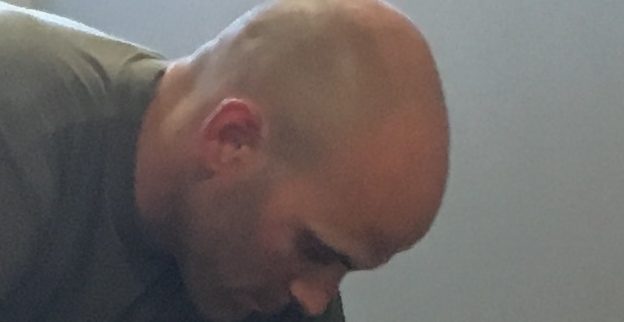The world’s leading climate scientists have warned that there are only a dozen years to keep global warming to a maximum of 1.5C, beyond which the risk of droughts, floods, and extreme heat increase drastically.
The Fourth National Climate Assessment (NCA4), a 1,500 page two-part congressionally mandated report by the U.S. Global Change Research Program (USGCRP) is the most recent warning of the dangers of climate change.
Completed in November 2018, NCA4 is a comprehensive and authoritative report on climate change and its impacts in the U.S.
NCA4 shows how communities across the country are already feeling the effects of climate change from the intensified risk of wildfires in California, to the droughts slowing agricultural production in Iowa and much more.
“I think it’s kind of a wakeup call. We really need to understand that it’s not ‘if’ climate change is occurring, it’s how can we slow it down,” Biology Professor and Interim Dean of the College of STEM, holding a Ph.D. in Biological Sciences Karen Meisch said.
According to the Yale Climate Change Opinion Map 2018, 68 percent of adults in Montgomery County “believe that global warming is happening,” while 53 percent of adults in Montgomery County “believe that global warming is caused by human activity.”
“I feel like the scientific consensus is easily that that is the case, that we are certain that global warming is caused by human activities, because 97 percent of scientists in the field of climate are highly convinced that we have a high degree of certainty that climate change is caused by people,” Instructor and State Coordinator for Project WET, Water Education for Teachers and Biology Professor Michelle Rogers said.
Despite this, only 44 percent of adults in Mongomery County believe “most scientists believe global warming is happening.”
“The idea that climate change is not an accepted idea in the scientific community is completely wrong. It’s almost universally accepted in the scientific community that climate change is occurring, that it’s caused by humans, and that it’s happening now,” Biology Professor Joseph Schiller said.
According to NASA, “Multiple studies published in peer-reviewed scientific journals show that 97 percent or more of actively publishing climate scientists agree: Climate-warming trends over the past century are extremely likely due to human activities.”
Yet, opponents still argue the validity of those findings. President Donald Trump is among them.
“Now I can understand to a degree why President Trump is trying to denounce it. He heavily campaigned on jobs. Well, now global warming says, ‘We’ve got to get away from our jobs that we’re doing now that are polluting,’” Professor of Geography Robert Sirk said. “Well, if you’re the president and you stood in front of an automaker in Cleveland, Ohio, how do you a year later come back and say, ‘Sorry but global warming says I’m going to have to not support you anymore.’ That’s his voters. He wants to keep his voters.”
“It all boils down to the fact that the climate is changing faster than we’ve ever seen before,” Sirk said, “and a lot of very sincere people say, ‘There’s nothing you can do about it, it’s nature,’ and a lot of other very sincere people say, ‘You’ve got to be crazy.’”
This contention leads to one of the biggest issues we face, in regard to climate change, according to Rogers, an unwillingness to even discuss the issue.
According to the Yale Climate Opinion Map 2018, only 31 percent of adults in Montgomery County, Tennessee, “discuss global warming at least occasionally.” This is 5 percent less than the national average.
“I think that’s the first thing we have to fix. It is complicated, and it’s really scary. So many people would rather avoid any topic that is complicated or scary, but that doesn’t mean you get to avoid the effects of the outcome,” Rogers said.
To students wondering where they can educate themselves on climate change, Rogers’ first source is NASA.
She believes most people feel comfortable trusting the science from NASA and views them as fairly independent of politics.
NASA’s climate change research is available online at https://climate.nasa.gov
In response to the climate change research presented in the NCA4, Biology Professor and Director of the Center for Excellence in Field Biology, Steven Hamilton has a simple takeaway.
“Listen to the science. The same science that tells you that vaccines are valid, that contributes to the development of medicines and computers, that put landers on Mars, is the same science that led to that report. Good science,” Hamilton said.
The science to which he refers is highly supported as evidenced by the high percentage of climate scientists who agree climate-warming trends over the past century are extremely likely due to human activities.
The qualifying language, though, can lead some opponents to doubt how many scientists truly support the findings.
Schiller has an explanation for this.
“When scientists say, ‘We can say with very high levels of certainty this thing is real and happening,’ what that means is they’re saying it’s more than 95 percent certain. So, there’s actually a numerical standard that underlies that language in terms of probability,” Schiller said.
Some APSU professors argue that regardless of how many scientists support climate change, the evidence is all around us.
“It baffles me sometimes that there are still individuals that want to debate whether or not climate change is actually a thing. The evidence is there. The consequences are something that are actually happening now,” Meisch said.
One example mentioned in the report was a major flooding event in India which occurred and in which a software company had over $2 million in losses.
“You might just read that and say that’s really bad for that company, but what does that actually mean? What does that translate to?” Meisch said. “Well, that translates to layoffs. That translates into job loss because companies have to recoup those monies.”
“We’re in a unique position because we’re middle Tennessee. We’ve got one foot in economics and we’ve got another foot in a rural farming community. Both of those will have very big impacts. Anything like a drought or too much rain,” Meisch said. “could impact crop yields, which ultimately impacts what we eat or pay for food. It also impacts livestock and what we’ll pay for meat. So, it’s all tied together.”
Due to the interconnected nature of the economy, much like an ecosystem, there are many compounding effects of global warming predicted by NCA4.
One, in particular, is of interest to Sirk.
“The real problem and the one that scares Robert Sirk to death is what’s going to happen to the oceans,” Sirk said.
Among other natural disasters predicted to occur with the worsening of climate change, is ocean acidification.
About half of the carbon dioxide that goes into the atmosphere goes into the oceans, turning them acidic and negatively impacting the ability of living creatures to continue to survive there.
Rogers explained how this, like many other of predicted natural disasters, cannot be solved by one person alone.
“One of the reasons I don’t want people to stop driving their car, or to take drastic personal action is that no one person is going to fix this,” Rogers says. “We’re going to have to make governmental changes, political changes, and that’s something that you have to do on a larger scale.”
Rogers believes that one of the biggest steps the US needs to take over the long term is to stop using fossil fuels and switch to renewable resources in order to lower carbon dioxide emissions.
Green Power Switch Energy is a renewable option available through the TVA. You can pay as little as four dollars more per month voluntarily, and the Clarksville Department of Electricity will increase the supply of solar and other green energy that they are using.
Essentially, you fund them to switch from fuels that produce carbon dioxide to fuels that don’t.
One of the ways that students at APSU already contribute to sustainability is through the $10 student sustainability fee that is collected every semester to fund the implementation of sustainability projects.
Students can participate by submitting proposals, attending meetings and becoming a member of the Student Sustainability Fee Committee itself.
Some passed proposals include recycling bins, B-Cycles, composting efforts, wind turbines and the Native Meadow.
Still, Schiller would like to see the university do more.
“I feel the university has done a lot of things, but they’ve done all those things largely on someone else’s dime,” Schiller said. “I think if they want to wear the mantle of being committed to sustainability, they’re going to need to start ponying up some of their own money.”
Students are urged not to be disheartened by the NCA4 predictions.
Meisch explained how, when she was younger, one of the biggest issues in the scientific community was the expanding hole in the ozone layer.
This was when some of the first policies and laws came through to help curb emissions, and afterward, they could physically see the hole get smaller again.
“While it’s a scary report to read it’s also important to realize that there’s hope, that these consequences are not something that is concrete if we make some changes, but we have to agree as a society to make these changes,” Meisch said.
The NCA4 can found online at https://nca2018.globalchange.gov






